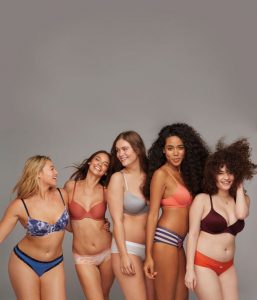We are in the midst of a digital revolution, with people relying on technology more so in their day-to-day lives. Humans are becoming so addicted to technology, that they’ll believe anything they see, whether it be articles, advertisements, or pictures.

It is with this that the use of photoshop comes into discussion. Most advertisements that you see have been professionally retouched by a photoshop artist. This ‘retouching’ process makes these models’ bodies thinner, their hair more coloured, their skin free of wrinkles and beauty marks, and so much more. This use of photoshop can be seen in advertisements, commercials, and even music videos. Due to this constant retouching, editing, and the unavoidable sight of “perfection”, it gives many the idea that they are not pretty enough, providing those with negative body images of themselves that will last for years to come. It is as if these artists are trying to make humans seem perfect, but little do they know, it’s the imperfections that make us more human than anything else.

In Sukhleen Thind’s blog post ‘Beauty Has Never Been More Real‘, Thind discusses the new marketing campaign started by the brand Aerie. Aerie has enacted ‘Aerie Real’, a way of advertising their clothes without the need of their models to be retouched or photoshopped. This campaign is huge for Aerie, as many of their competitors, such as Victoria’s Secret, are known for their use of photoshop. I agree with Thind, as this has not only been a social success, encouraging women of all ages to be proud of themselves, but it has also been financially successful for the retail company. Aerie reported a 20% sales increase in 2015, proving that consumers are wanting real advertisements with models that convey the many imperfections that people may possess.

The importance of Aerie and these advertisements is that a big step has now been taken in the world of marketing and advertising. In the coming years, it will be more common to see natural-looking models, without extreme retouching or maybe even make-up free. Not only should this way of advertising be supported, but it should also be encouraged. Companies such as Aerie should see this as their Corporate Social Responsibility. It is their duty to encourage their consumers to be themselves, while also getting the benefit of increased loyalty and sales. This shared value, if properly met, can help further the fashion industry to be more than just pretty faces and thin bodies.
Now is the time for these companies to realize that being perfect is a thing of the past. If a company wants to be successful, they will have to show ones’ insecurities, and show that being true is being you.
Word Count: 450
References:
BellaNaija.com,”Meghan Trainor Pulls Down “Me Too” Video Due to Excessive Photoshop.” BellaNaija. BellaNaija, 05 Nov. 2016. Web. 30 Oct. 2016.
Dries, Kate. “What Lady Gaga’s Versace Ads Look Like Without Photoshop.” Jezebel. Jezebel, 15 Apr. 2014. Web. 30 Oct. 2016.
Jung, Helin. “There’s a Glaring Photoshop Lie in Brooklyn Decker’s Sports Illustrated Swimsuit Cover.” Cosmopolitan. Cosmopolitan, 26 May 2016. Web. 30 Oct. 2016.
Mosbergen, Dominique. “Since Lingerie Brand Aerie Ditched Photoshopped Ads, Sales Have Surged.” Since Lingerie Brand Aerie Ditched Photoshopped Ads, Sales Have Surged. Huffington Post, 19 May 2016. Web. 30 Oct. 2016.
Olson, Camilla, and Samantha Jensen. “Op-Ed | Photoshopped Fashion Ads Should Be Labelled.” The Business of Fashion. Business of Fashion, 23 June 2014. Web. 31 Oct. 2016.
Rodulfo, Kristina. “Aerie Recruits Real Women for Its Latest #AerieREAL Campaign.” ELLE. ELLE, 4 Aug. 2016. Web. 30 Oct. 2016.
 New purposes for virtual reality that have been used in China include educational use, real estate touring, and
New purposes for virtual reality that have been used in China include educational use, real estate touring, and 
